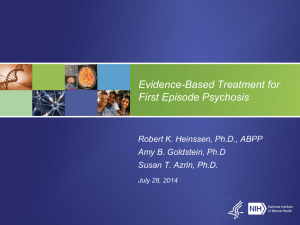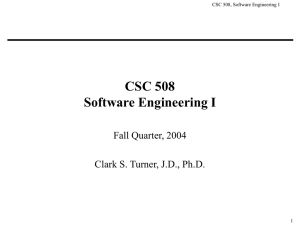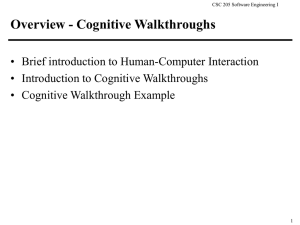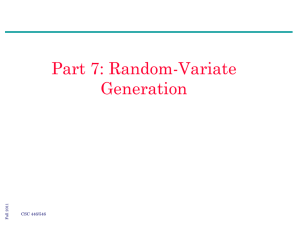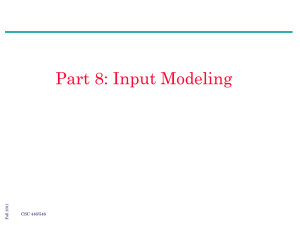TCS – Theoretical Computer Science - CSC Intra
advertisement
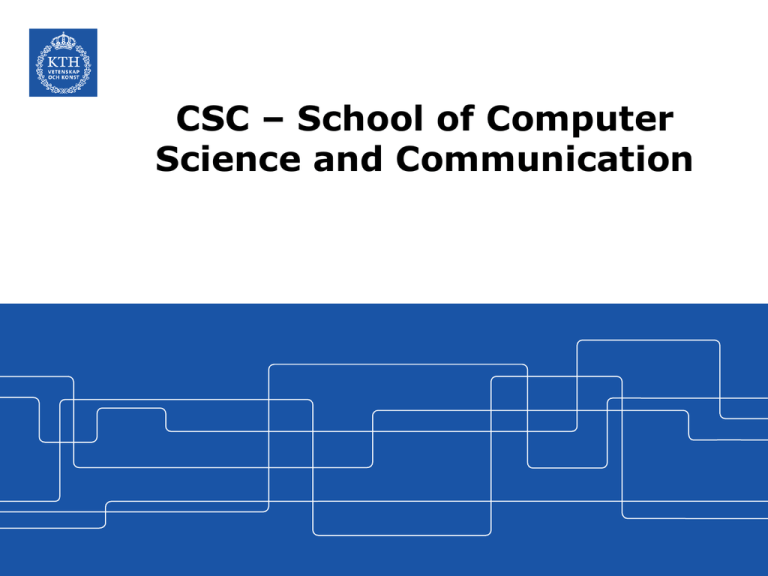
CSC – School of Computer Science and Communication CSC in brief – Facts and figures about CSC CSC research and education CSC is one of Sweden’s most advanced and successful research and education institutions in Information Technology. CSC works with education and research at KTH Royal Institute of Technology and at Stockholm University in: • • • • • Computer Science, Media Technology, Human-Computer Interaction, Speech Technology and Music Acoustics, High Performance Computing and Visualization. CSC – basic figures • About 380 people work in this dynamic environment. • About 100 graduate students. • 1500 undergraduate students are enrolled in our education programmes. • About 6000 students participate in our about 300 courses each year, ranging from basic level to research level. CSC Departments CSC TCS – Theoretical Computer Science CB Computational Biology CVAP - Computer Vision and Active Perception MID – Media Technology and Interaction Design Speech, Music and Hearing PDC – Center for High Performing Computing HPCViz - High Performance Computing and Visualization CSC Departments more in-depth CB – Computational Biology The department of Computational Biology does research in the fields of systems biology, computational neuroscience, neurocomputing, computational biomechanics, biological physics, theoretical biology, genome evolution and gene regulation. The department has been involved in planning the EU Flagship project The Human Brain Project. CVAP – Computer Vision & Active Perception The department of Computer Vision and Active Perception performs research in computer vision and robotics, developing methods for analyzing images in the same manner humans perceive and understand their surroundings. The research can be used to develop vision used for manmachine interaction. TCS – Theoretical Computer Science The mission of the Theoretical Computer Science group is to carry the culture of theoretical computer science, and to develop and disseminate new, interesting and useful theory in computer science. TCS is concerned with the foundations of efficient and correct algorithms, and deals with the tractability of computational problems. Applications include computational biology, cryptography, natural language tools, and complex technical systems. Research has been conducted on for example electronic voting systems. MID – Media Technology and Interaction Design The MID group at CSC is an interdisciplinary research group consisting of the two previous research groups Media Technology and Graphical Production and Human Computer Interaction. The group has its roots in computer and behavioural science, graphic technique and media technology, and today has faculty that represents e.g. anthropology and psychology, computer science and media technology, interaction design, film and literature science, as well as media and communication science. TMH – Speech, Music and Hearing • Music Acoustics Group The research in the music acoustics group runs in three main streams; • instrument acoustics, especially strings; • the science of music performance; and • the acoustics of the human voice, in singing and for medical applications. While running in parallel for periods, they often merge and interact. An experimental approach has long been characteristic of the research. TMH – Speech, Music and Hearing • TMH Hearing Technology Group The research of the hearing technology group aims to improve hearing impaired persons ability to perceive speech and other sounds and to understand what is being said. The challenge lies in trying to apply the fundamental knowledge of human hearing and perception to "intelligent" electronic aids for changing circumstances in everyday life. PDC – Center for High Performance Computing PDC operates leading-edge, high-performance computers on a national level. PDC offers easily accessible computational resources that primarily cater to the needs of Swedish academic research and education. PDC also takes part in major international projects to develop high-performance computing for the future and stay a leading national resource in parallel computing. HPCViz – High Performance Computing and Visualization The HPCViz department is concerned with the development of new concepts for improved usage of high performance computer systems, including modeling and simulation, as well as analysis and synthesis of (typically) visual data. Research Centres at KTH CSC • CESC - Centre for Sustainable Communications • CAS – Centrum för Autonoma System • COT – Centrum för Opera och Teknik • Green Leap Education at CSC What CSC can offer in terms of programs Education programs CSC gives two five-year programs in Swedish leading to the degree Master of science of engineering: • Computer science and engineering • Media technology. Research Areas at CSC CSC Computer Science Media Technology and Interaction Design Speech and Music Communication Computer Science Comprises: • CVAP – Computational Vision and Active Perception Laboratory • CAS – Centre for Autonomous Systems • CB – Computational Biology • TCS – Theoretical Computer Science • HPCViz – High Performance Computing and Visualization Conducts research within computer science on a broad scale. Media Technology & Interaction Design • Originates in computer and behavioural science, as well as graphic technology and media technology. • The faculty represents for example anthropology and psychology, computer science and media technology, interaction design, film and literature science, as well as media and communication sciences. Speech and Music Communication • Covers topics ranging from theoretical development of speech production models, through phonetic analyses to practical applications of speech technology. • Includes the Centre for Speech Technology (CTT). • Research runs in three main streams: - instrument acoustics, especially strings, - the science of music performance, - the acoustics of the human voice, in singing and for medical applications. Other active research centre cooperations at KTH CSC CSC is an SBI, Stockholm Brain Institute, partner, concerning the calculation platform, and hosts the Swedish Neuro Information Node within INCF. • SBI - Stockholm Brain Institute • INCF - International Neuroinformatics Coordinating Facility • SBC – Stockholm Bioinformatic Center
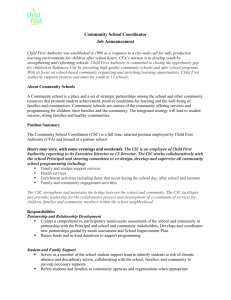
![[PPT] [PPT] - CSC Intra](http://s2.studylib.net/store/data/005526802_2-e4f1209d93d35df3579377e0a9a6df0b-300x300.png)
